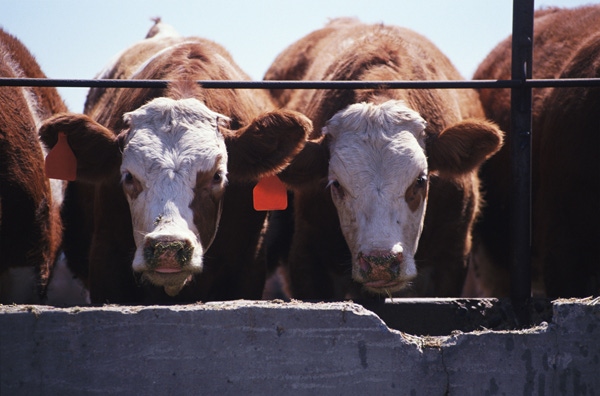April 13, 2012

Cattlemen who made significant cuts in herd size or completely de-stocked because of last year’s historic drought should be in no hurry to begin restocking pastures and ranges that may still need time to recover.
“Think seriously about restocking rates,” says David Anderson, Texas AgriLife Extension ag economist. We’ve just seen the most serious drought on record, but we could see two or three more drought years in this drought cycle.”
For one thing, buying feed is expensive. “Stock lighter so you can feed forage you grow rather than feed you buy.”
Lower stocking rates may affect overall operation management decisions. “Fewer cows mean fewer calves and less income potential,” Anderson says. “So ranchers may have less cash flow and less stable income. But they also face lower costs in a dry year.”
Anderson says last year’s drought should have taught cattlemen that they need a drought strategy, “if they didn’t have one before. And they need to be prepared to follow that plan. Decide whether to feed or not to feed during a prolonged drought and determine the trigger points at which you need to take action (such as selling cattle to reduce feed costs).”
If ranchers decide to feed, they need to think about what they feed and how they feed it, Anderson says. “Feeding round bales, for instance, results in a lot of waste, possibly as much as 30 percent, depending on how they place the bales. That’s a significant amount of money considering the cost of hay last summer.”
He says cattle producers need to determine what and how they will feed “before a crisis hits.”
Financial considerations are also a factor in rebuilding a herd, he says. Interest rates are currently very low, so that’s an advantage for producers who want to buy cattle to restock. “But costs are also higher so total interest cost could actually be higher,” he says.
“Think about the value of the cattle, with cull calves selling for as much as 80 cents a pound. A cow herd is a large investment. So how does that change management strategy?”
Anderson says producers have two management options with high cow herd value. They can sell and take advantage of high prices or they can manage harder and try to capitalize on those high returns by increasing production.
“But if a manager decides to spend money, he has to make certain the investment will pay off. Sooner or later, the herd will expand and prices will go down.”
Anderson says a crucial reason to be cautious about restocking is the vulnerable nature of pasture and ranges. Recent rains in parts of Texas may have greened up pasture and rangeland, he says, but that does not mean those areas have recovered. In fact, a lot of the greenery will be weeds.
“It takes a couple of years after a drought for ranges to recover,” he says. “And we also need to think about whether the recent rains will last or not.”
He says cattle producers make a big mistake by restocking too soon after drought stress as severe as last summer’s.
“Also, drought has a multi-year impact on cows—health, nutrition, reproduction, etc. The next year’s calf crop likely will be smaller. This and other effects of drought will not show up for at least a year.”
He says financial consideration of rebuilding also will make herd rebuilding a slow process. He says producers will look at the feed costs from last year and start repaying debts before they get serious about restocking. And they’ll have to rebuild with expensive animals. “Replacement costs will be high.”
Anderson says he has not heard a lot of interest in rebuilding the Texas cattle herd though he expects a lot of producers “are thinking about it.”
He says the drought may have provided a good exit strategy for some cattlemen. “Some will see this as a good opportunity to get out,” he says. “It will be interesting to see how many get back in after selling out. Some will, probably not all.”
But those who decide to stay out of the cattle business may provide opportunities for others, Anderson says. “The land is still there and the grass still grows so many will look for a means of earning a return.”
He says getting a return using grass comes down to livestock and that could provide landowners an opportunity to lease to someone else—either a new producer or someone trying to expand an operation.
He says a new generation of cattlemen may find openings to get into the business as ranchers de-stock and look for other land use opportunities.
You May Also Like




